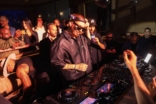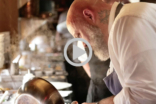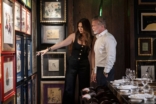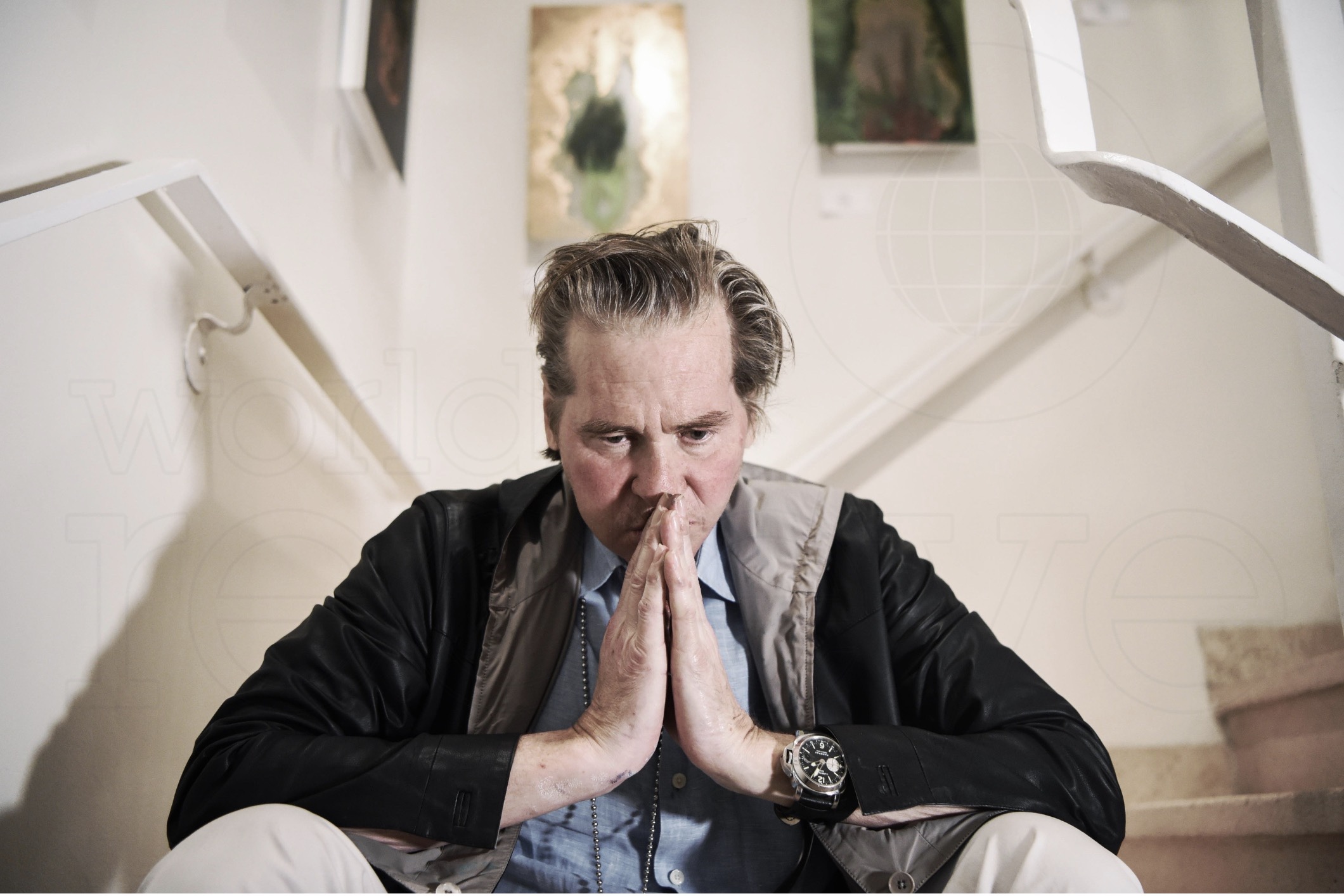Q&A: Dalya Luttwak: Man = Upside Down Tree at Galleria Ca’ d’Oro

Haydee & Marco Rocca, & Dalya Luttwak
Miami, FL – November , 2015 – Art enthusiasts came out to enjoy Dalya Luttwak’s first solo show in Miami, Man = Upside Down Tree, at Galleria Ca’ d’Oro curated by Gloria Porcella. Dalya Luttwak’s sculpture explores the subterranean world of roots, exposing their beauty. Formed from steel, Luttwak’s large-scale sculpture exposes the depth of and breadth of the often overlooked root. Luttwak’s exhibition will be on display until November 30th.
Since 2007, Luttwak has been working on a series of large-scale metal sculptures that symbolically represent the root systems of various plants. “My sculptures are site-specific or site-responsive; at times, I work from the roots themselves, which I dig out of the earth; other times, I photograph, copy, or draw roots as the basis for my work,” exclaims Luttwak. “I try to uncover the hidden beauty of roots, exploring the relationship between what grows above the ground and the invisible parts below of various root systems.”

Gloria Porcella, Alan Tibaldeo, & Dalya Luttwak
WRE: Did you always know you wanted to be an artist, or is this something that just developed naturally?
DL: I did not always define myself as an artist but as long as I remember there was some material in my hands to be manipulate–from paint to steel rods.
WRE: Tell us about your latest exhibition at Galleria Ca’ D’Oro Miami?
DL: The exhibition at Galleria Ca’ d’Oro in Miami is my latest in the series of depiction of different roots systems; among others, a large wall installation depicts Cannabis Sativa roots painted in hot pinks .


WRE: How have your Israeli roots influenced your work?
DL: My European and my Israeli roots are ever present in my mind, both the living roots and those cut off.
WRE: What do you see when you look at roots? What do they mean to you?
DL: When I look at roots I see the origins of life itself.

WRE: How long does it usually take you to come up with new ideas? Where do you draw inspiration from?
DL: Because cutting and welding steel takes time, as well as effort, I always have more ideas than working hours to execute them. I draw my inspiration from nature itself; when I see a plant I immediately wander what it’s root looks like.
WRE: How have people understood your emotional expression through your sculptures?
DL: Quite a few recognize that I seek to reveal what nature prefers to hide, and secondly, that some of my largest sculptures are of roots that are quite small in reality.
WRE: What is a typical day in the studio?
DL: Once I have a clear plan for a design of the next scuplture, my typical day in the workshop consists of forging, bending , cutting steel-rods, then grinding, welding and painting them.


WRE: When are you at your most creative?
DL: I am always sensitive to my environment, whatever I do and wherever I go. I am most creative when I have a chance to execute site-specific works–like the very large red root sculpture I made for the two towers at the entrance of the Arsenale in Venice, that rose from the water to climb up on one tower and then fly over to the other.
WRE: What can we expect in the future in regards to your work?
DL: I am looking for sites to which I can add my Roots. Even a plain wall can become very dramatic with a vividly-colored root surging up from the ground.

Dalya Luttwak, Marco & Haydee Rocca

Gloria Porcella, Alan Tibaldeo, & Dalya Luttwak
My sculptures reveal what nature prefers to conceal. My wish is to uncover and discover roots, especially when they are hidden.
Dalya Luttwak

Dalya Luttwak & Terry Riley

Kevin McAlarnen & Terry Riley

Gloria Porcella & Carol Damian

Alan Tibaldeo, Tracy Young, Sam Sauro Sale, & Michael Goldstein

DJ Smeejay & Scott Shepard




Dalya Luttwak

Dalya Luttwak & Gloria Porcella

Gloria Porcella, Micol Massiah, & Domenica Grande

Michela Canali & Ricardo Pieroni

Talia Pigna, Benjamin Chimenelli, & Sigge Tvedt

Aneta Ilic, Vanja Plavsa, & Sanja Adzaip

Joyce Lopes & Liliana Beltran

Gisela Cacciamani & Maite Echevarria

Jeanne Pierson & Sophie Guillermin

DJ Smeejay


Gloria Porcella, Edward Luttwak, Susane Ronai, Dalya Luttwak, & Alan Tibaldeo

Kevin More, Jane Castro, & Alan Tibaldeo

Alan Tibaldeo & Sam Sauro Sale

Micol Massiah & Fernando Sonnino

Massimo Maltese & Gloria Porcella

Tracy Aronson, Bruce Taylor, & Gloria Porcella

Ariel Roman, Haydee Rocca, Charo Cruz, Mercedes Cisneros, & Marco Rocca

Haydee Rocca, Ariel Roman, Alan Tibaldeo, Dalya Luttwak, & Marco Rocca

Jamie Cardona, Alan Tibaldeo, Dalya Luttwak, & Scott Shepard

Dalya Luttwak & Nikki Levine

Susane Ronai & Gloria Porcella

Orlando Grigley, Bruce Braxton, & Ariel Roman










































